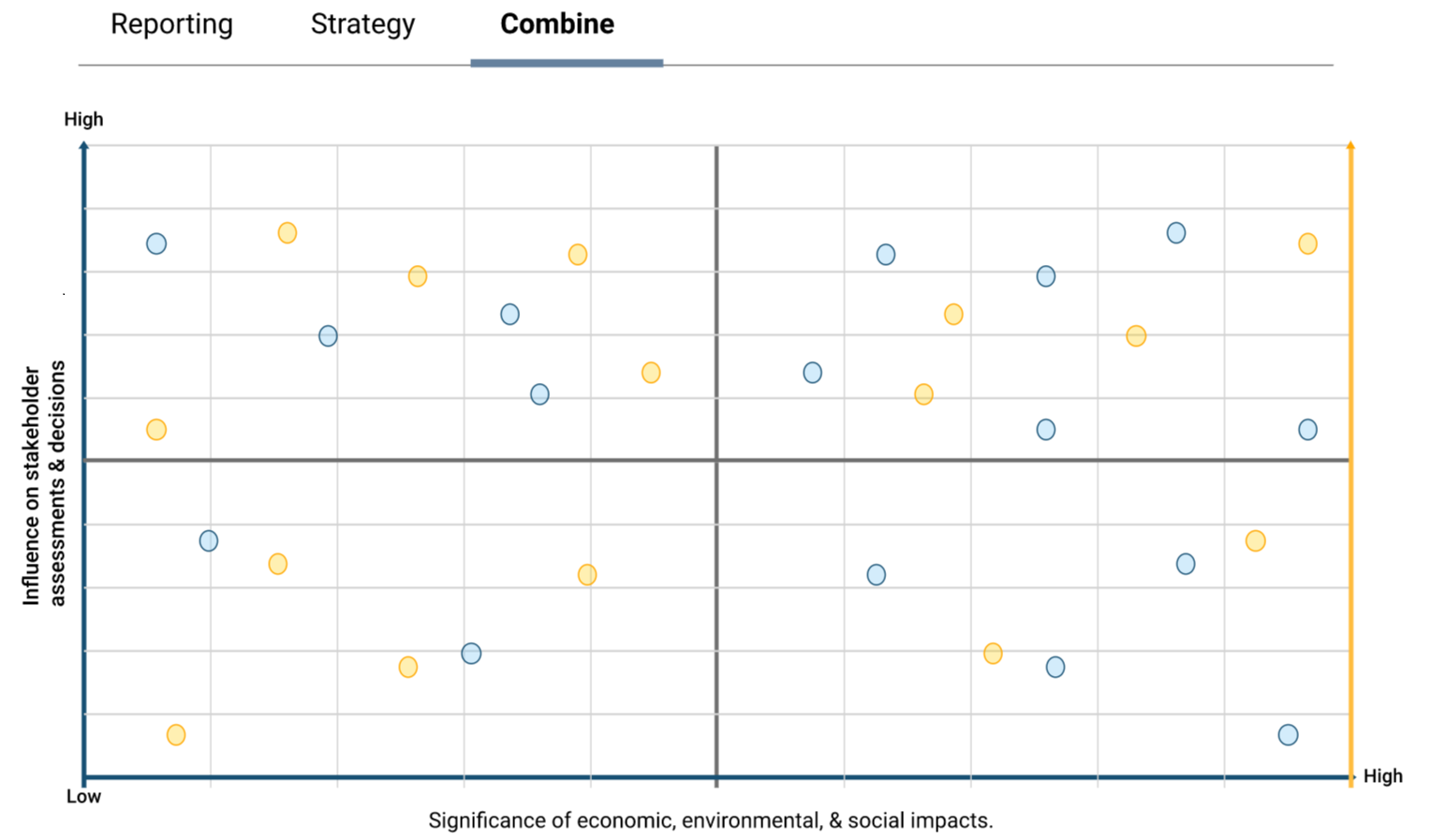Overall Progress:
Company Information
Materiality Assessment
Information to navigate you through the process can be found under the Guidance Notes link.
Properties
Guidance notes
What are Material Issues?
Material issues are those that are important for reflecting the organisation’s economic, environmental and social impacts, and influencing decisions of stakeholders.Materiality assessment is most useful if it informs reporting and strategy
How to Identify material issues?
- Include a wide range of stakeholders and facilitate their right to be heard. Draw on both internal and external sources of information. This can include feedback and survey forms, news, industry/market research, etc.
- Identify a comprehensive list of environment, governance and social issues that are relevant to your business, such as ability to deliver on strategy and policies, best practice norms in the industry, stakeholder behaviour & concerns, societal norms and financial performance.
- Document the process and record information clearly and systematically to facilitate analysis and assurance.
- Cluster issues into topics if necessary.
- Take into account the topics’ significance in alignment to your business context.
- What are your internal and external criteria to identify topics that 1) drive strategy and performance, and 2) are most important to stakeholders. E.g. topics that have significant risk and opportunities, direct financial impact, etc.
- Use criteria, thresholds, and evidence to prioritise each individual issue. Identify what is:
- Material – critical to the success of business strategy and your stakeholders. Topics should be central to management systems and key performance indicators.
- Relevant but not strategically material – may not be central to business strategy but may inform future development e.g. compliance requirements, operational performance issues, stakeholder perception issues.
- Not material – low priority topics that to not warrant significant action or reporting at this stage but should be monitored.
- Assess each issue according to agreed criteria.
- Map the topics into the materiality assessment matrix. Be clear, transparent, and realistic.
- Ensure that the mapping of material topics is sound and credible both internally and externally, and the business is able to embed the findings and implications into internal decision-making.
- Check that the exercise has takin into account input that is as complete as possible
- The results of the mapping exercise should be reviewed by internal and external advisors e.g. customers, investors.
- Ensure agreement has been achieved at Board and senior management levels.
Visual prioritisation of topics

Annex
- Constant innovation
- Constant innovation
- Product safety
- Ethical conduct
- Ethical suppliers
- Transparency
- IP rights
- Legal compliance
- Financial compliance
- Anti-bribery policies
- Anti-competition practices
- Child labour
- Forced labour or modern slavery
- Waste / Recyclables management
- Energy efficiency
- Water usage
- Climate change and emissions
- Environmentally friendly materials
- Materials consumption efficiency
- Waste water discharge
- Employee health and safety
- Fair wages
- Non-discrimination in hiring and career progression
- Gender diversity
- Ethnic diversity
- Staff training
- Volunteerism
- National Service
Governance
Human Rights
Environment
Labour
Anti-Corruption
Section 1: Overview - Areas Of Strengths And Gaps
| Points | Maximum Points | Percentage |
|---|
Annual Performance Summary
Section 2: Sustainable Development Goals (SDGs)
Section 3: Global Reporting Initiative (GRI) Standards
Section 4: UNGC Ten Principles
Section 5: (i) UDHR, And (ii) 2017 Tripartite Declaration Of Principles Concerning Multinational Enterprices And Social Policy
Submission History
| Draft Title | Last Edited |
|---|
| No | Submission | Date of Submission | Period Covered | Year Covered |
|---|
Export Report
Summary of Performance
Performance Summary for the Year
| Points | Maximum Points | Percentage |
|---|
Annual Performance Progress
Company Information
Company Name
Period Covered for this report
Date of Previous Communication
Frequency of Reporting
Scope of Current Report
Company Category Classification
Principal activities of your company
Address of your company's headquarters
Countries where your company has significant operations
Key countries where your company's products or services are sold
Type of customers your company provides products or services to
Your company's ownership structure
Size of Reporting Enterprise
Country of Reporting Entity
Percentage of ownership for each owner of your company
List of the type of stakeholder groups your company engages with
Basis for identifying and selecting the type of stakeholder groups to engage with
How does your company engage with the identified stakeholders?
Are any of the engagements identified in the above question conducted specifically as part of the report preparation process?
How often does your company engage with the identified stakeholders?
Size of reporting company
Total number of employees
Total number of female and male employees broken down by employment contract
Total number of female and male employees broken down by employment type
Total number of employees broken down by region
Net sales (for private sector organisations) or net revenue (for public sector companies) from your profit and loss statement
Total equity (for private sector companies) from your balance sheet
Total debt (for private sector companies) from your balance sheet
Description of company's supply chain
Total number of suppliers engaged
Geographic location of suppliers
Estimated monetary value of payments made to suppliers
Significant changes to your company size, structure or supply chain since your last RICE report
Change in the location of operation, including opening and closing of facilities, and expansion
Change in capital structure (for private companies)
Change in the location of suppliers (such that it increases business risk), or change in relationship with suppliers
Statement from the most senior decision-maker of the organisation about the relevance of sustainability to the organisation and its strategy for addressing sustainability.
Your company's key risks, opportunities, and impacts on economic, environmental and social matters
Your company’s values, principles and standards
Your company's internal and external channels/mechanisms for reporting and seeking advice on unethical or unlawful behaviour
Governance structure of your company
Additional details on highest governance body
Nomination and selection process of highest governance body
List of all the entities that are included in your company's consolidated financial documents
List of membership with national or international associations and organisations and/or a list of environmental, social and governance charters, principles or other initiatives that the company subscribes or endorses
Contact Details
Name of Contact Person
Telephone Number of Contact Person
Email Address of Contact Person
Company Website
Materiality Assessment
For each risk and opportunity identified above, please explain in bulleted points why they were identified
(a) Is there a sustainability strategy plan to address the material factors identified?
(b) Is the Board of Directors involved in the process of developing the sustainability strategy plan?
(c) Is the sustainability strategy plan embedded into day-to-day operations e.g part of employees' KPIs?





